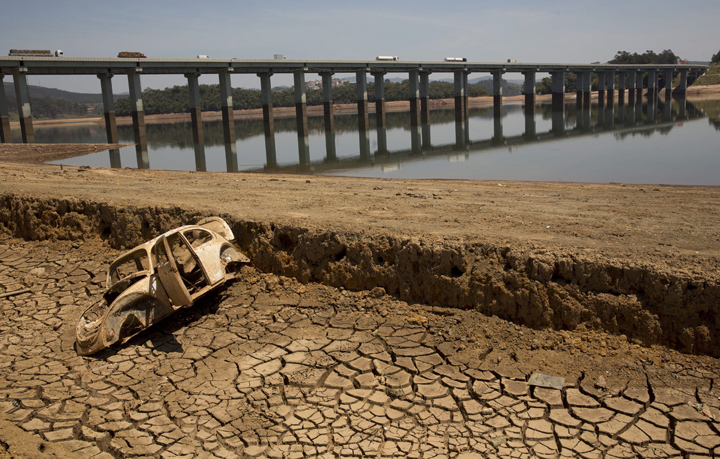While the word “drought” is on the lips of Americans as a result of historic dry conditions in California, America’s most populous state is far from being alone. Drought-like conditions are plaguing other parts of the world as well.

A recent found that this past June and July, Europe experienced its worst drought since 2003. The European Drought Observatory (EDO) found that the countries affected most were France, Belgium, The Netherlands, Luxembourg, Germany, Hungary, the Czech Republic, northern Italy and northern Spain.
The region has seen little rain and record-breaking temperatures. In Spain, maximum daily temperatures hovered near 30 C for more than a month with little rainfall making for a troublesome combination.
Sao Paulo, Brazil — a city with a population of 44 million people — is experiencing the worst drought in 80 years. In October 2014, its main dam dropped to just 3.3 per cent its capacity, the lowest in its history.
According to Ben Cook, a co-author of a new study published in the journal Geophysical Research Letters, North Korea endured a particularly long drought, though it seems to be coming out of it. West Africa is also experiencing drought conditions leaving millions without access to clean, potable water and the inability to grow crops, he said.
- Enter at your own risk: New home security camera aims paintballs at intruders
- High benzene levels detected near Ontario First Nation for weeks, residents report sickness
- Beijing orders Apple to pull WhatsApp, Threads from its China app store
- Boston Dynamics unveils ‘creepy’ new fully electric humanoid robot
However, “The two big ones right now outside of the U.S. is Europe and Southeast Asia.”
In particular, he notes that Thailand is enduring one of is worst drought in years and is beginning to impact its rice production, a vital staple and economic driver of the country.
Worse still is that with this being a year we could see historic El Nino conditions, it could exacerbate areas that are already delicately balanced on the water scale.
Speaking about the California drought, Cook said, “What it means is that we have to be smarter about the water we do have.”
But the same could be said around the world.
Though many parts of the world are enduring their own form of drought conditions, that’s not to say that the situation in California isn’t dire: As of writing this story, the state’s major reservoirs were only around 40 per cent capacity.
This lack of water is also occurring in the country’s most populous state, affecting more than 37 million people — that’s more than the entire population of Canada. Economically, this drought could cripple the agriculture industry, the main user of the state’s water resources.
A look at California
“I think it’s fair to say it’s because California being California it’s brought attention to climate change and how it can affect us,” said Lowell Stott, Earth Sciences professor at the University of Southern California.
Warming ocean waters interacting with atmospheric variability alter the jet stream which takes most precipitation out of the region. If ocean temperatures continue to rise as a result of increased greenhouse gases, the results will be similar.
But about 45 per cent of the United States is experiencing drought conditions. Not just California.
READ MORE: Watch – Bill Gates drinks water that was once poop — for a good cause
The state suffered a mega-drought about 1,000 years ago. Stott said that the current drought is concerning, particularly due to its “persistence and length.”
“We may be seeing the beginning of that kind of climate system, in the northern hemisphere, at least.”
Cook agrees. “This is pretty close to the mega-drought.”
“I have concerns that we’re entering a climate system similar to that of 1,000 years ago,” Stott said. “The consequences of that would be catastrophic if it played itself out.”




Comments